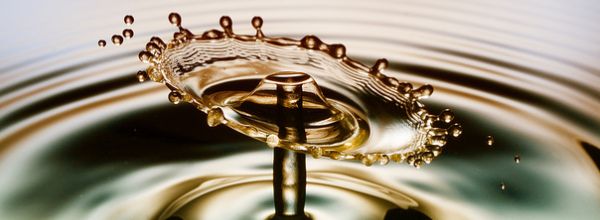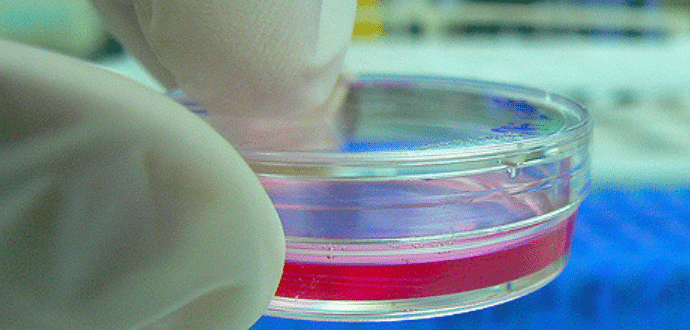The first thing one might notice when working with metallo-proteins is that they offer unique, colorful reactions. These colorful reactions are based not only on the metal, but the ligand, or coordinating molecules. Approximately 80% of proteins contain inorganic cofactors like iron (Fe) and copper (Cu) metals necessary to catalyze a reaction. Understanding how these metals are involved in our everyday biology is just as important as it is fascinating.
Metallo-proteins can be quite finicky and some are extra sensitive to oxygen so below contains some helpful tips on how to reconstitute the protein, or add the metal.
I Have Purely Expressed Protein, but no Metal, Now What?
The protein without metal is called apo-protein. Apo-proteins do not like to be very concentrated in this state, so it is better to keep the proteins dilute (no more than 100 μm) prior to reconstituting with metal.
Reconstitution is very dependent on the metal and the oxidation state you desire. I will explain some of the differences I used while reconstituting the oxidized versus the reduced states of copper.
Before we get started though, make sure you prevent trace metal contamination. It would be a lot of work to find out there is a completely different metal stuck in the active site of your precious protein and it can’t be removed. Rinse your glassware frequently with 0.1% nitric acid to remove trace metals.
Reconstitution of Cupric (Copper (II)) Ions
Metal ions and buffer interactions affect the reconstitution process, so it is necessary to find the appropriate buffer for your metallo-protein system. For example, I do not use Tris (2-amino-2 (hydroxymethyl)-1,3-propanediol) buffer during reconstitution because it complexes, or chelates the metal, with stronger affinity compared to dilute phosphate buffer for my system anyhow.
Prior to reconstitution, it is important to dialyze the apo-protein in the buffer of choice to remove any small molecules like salts or reducing agents used during purification. You can use dialysis tubing or cassettes, but double check that you have the right molecular weight cutoff (MWCO) for your protein and that there are no visible holes.
Dialyze the protein (again keeping it dilute) over night at 4°C in order to reduce the unwanted levels of small molecules, or alternatively the same day by incorporating several buffer exchanges at room temperature with at least two hours per dialysis required. The concentration of unwanted small molecules is reduced by 8 x 106 with 3 buffer exchanges if you have 20 mL of sample and 4 L of dialysis buffer.
Once the protein has been buffered, carefully remove the protein from either the dialysis cassette or tubing and place the dilute protein in a clean conical tube on ice. Next, you can use a syringe pump to add the metal ions slowly over approximately an hour. Use a stir bar for continuous mixing, and equilibrate the sample for approximately an hour after addition.
A key point to reconstitution is slow addition of the metal using a syringe pump, which is performed on ice. If I want two copper ions to “stick” I use excess metal, approximately 2.5 mol equivalents per protein. Most syringe pumps have an interface in order to program the make and model of the syringe to account for the volume dispensed over time, which you can imagine is also very important to the reconstitution process.
After the equilibration process, dialyze the now reconstituted protein overnight to remove any unbound, or not tightly bound copper ions. It is also important to quantify the metal to protein ratio using your favorite, reliable spectroscopic method before working with the protein.
Reconstitution of Cuprous (Copper (I)) Ions
If I want to reconstitute the protein with copper (I) ions, an anaerobic chamber is very useful, but much more tedious than using the oxidized version of the metal. In addition, more steps are needed to remove residual oxygen from everything.
Remember to bring any needed equipment in to the chamber at least a night before you begin the experiment, if not several days before. In addition, purge or degas solutions or buffer for 30 minutes to 1 hour with an inert gas such as argon or nitrogen before bringing them inside the intake chamber.
In regards to the protein, it if is stable enough, and requires reduction of disulfides, leave the protein to incubate anaerobically with the reductant and dialyze it away in the chamber over night. If the protein is not stable enough for over night dialysis in the chamber, briefly purge it with an inert gas and equilibrate in the chamber 30 minutes to 1 hour prior to reducing the disulfides. In place of dialysis, you can use a desalting spin column to quickly remove any residual reductant.
As above, reconstitute proteins using the slow addition syringe pump method and excess cuprous ions. And as before, remove excess metal using dialysis or a desalting spin column. Remember, the spin column will require the use of a microcentrifuge inside the chamber.
Freeze and store samples with liquid nitrogen. To bring liquid nitrogen inside the chamber, remove a lot of gas from insize via vacuum (about half). The liquid nitrogen gives off nitrogen gas while in the chamber and fills the chamber up rather quickly, which can be very dangerous.
Studying the proper structure of metallo-proteins is important in elucidating various metal related diseases such as ALS or Menke’s disease (copper deficiency), to name a couple. This research can only be accomplished with consistent and clean experimental procedures that allow you to study the properly reconstituted metallo-protein.







